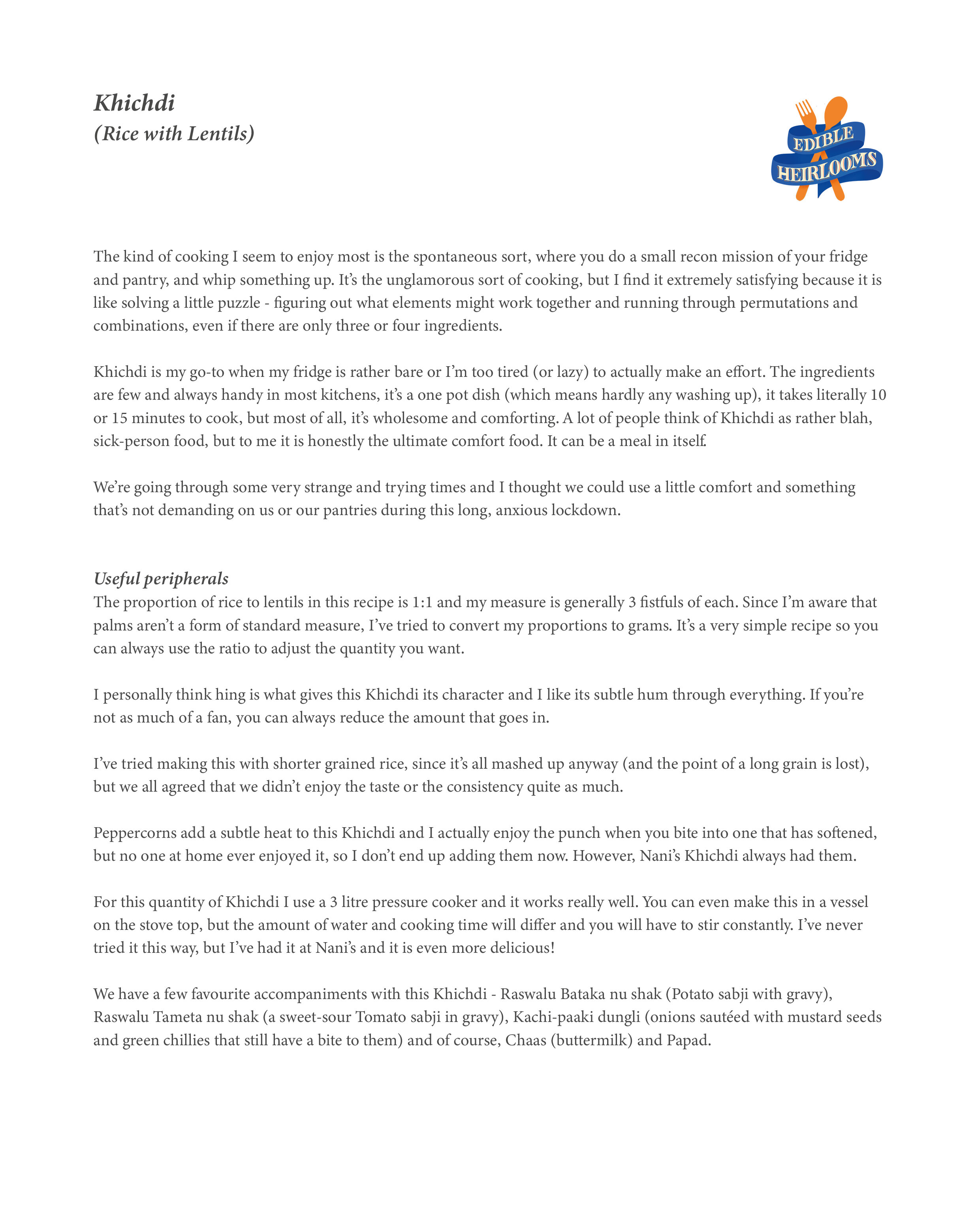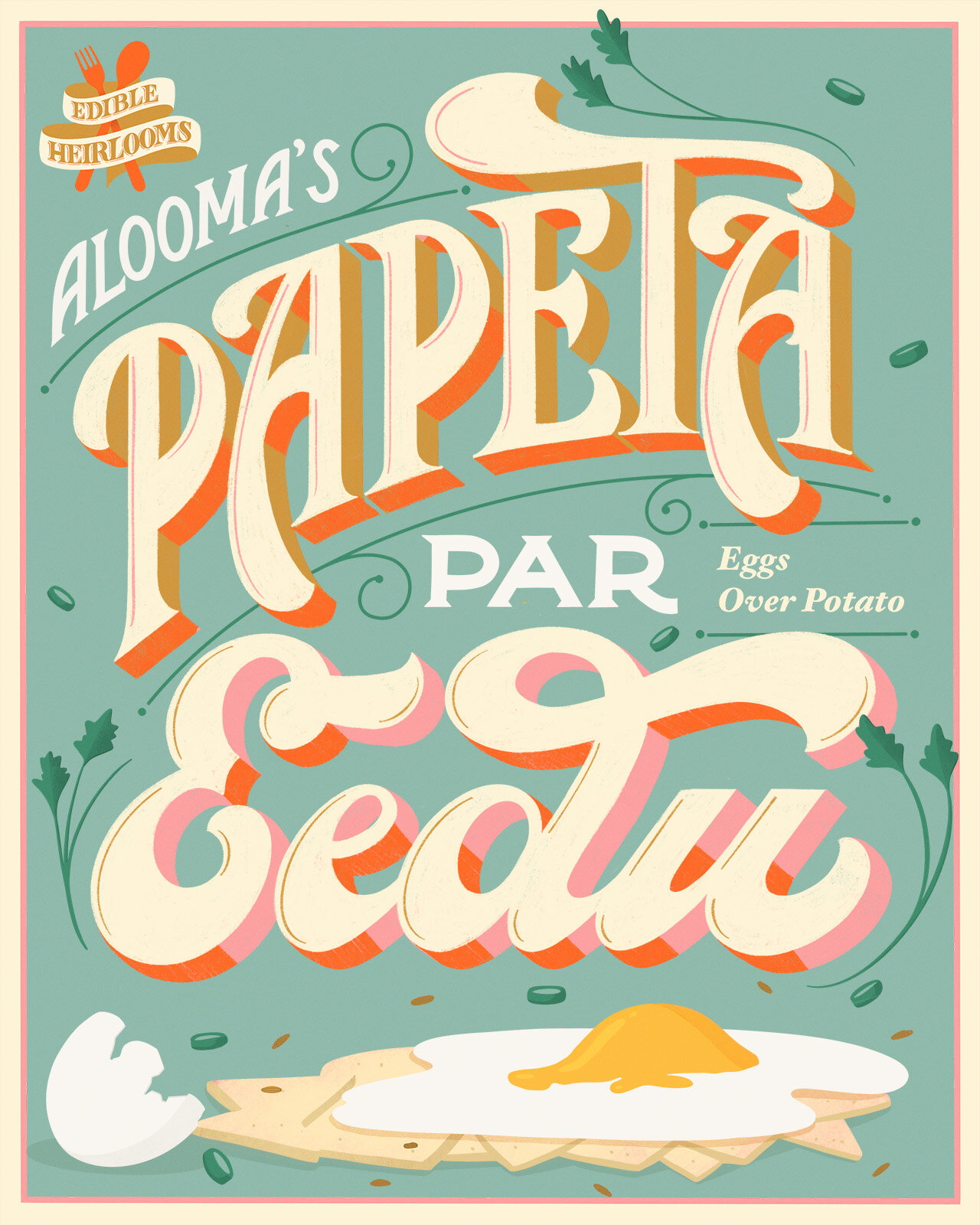While the world goes through this very strange time together (but in varying degrees), we have been witness to the fact that so many of us have been seeking comfort in food. There’s a joy in cooking, eating and sharing, that for a few hours a day can drown out the chaos that can’t otherwise be ignored. It is in this vein that I write this post and it really has been a long time coming.
There are three things I’d like to say before I start this post -
One, that if there ever was a Santa Claus like figure, she is a woman. Two, her generosity is unparalleled and she works year round to make those around her supremely happy. Three, she is my aunt, Nilu. Or as I call her, Nilufui.
Her workshop is a small kitchen, tightly packed with ingredients and utensils and it is hot at the best of times. In summer however, it is literally a little furnace, but that never stops her. She still moves around with the ease and efficiency of a seasoned pro, infusing bags of flavour into anything she touches. You’d think she was a wedding caterer because there are always larger than life cauldrons bubbling over on her stove. In fact, I don’t think I have ever seen a small pot or pan in that kitchen. Cooking for a herd gives most people anxiety, but not Nilufui. She cooks in anticipation of feeding a flock … three times over. But this is just her, or them, rather - as my dad would say, my uncle and aunt are the most large hearted people in the world. They’ve hosted just about everybody and it’s always, always a feast. Even when you leave their place you walk away with about 50 boxes of food. How I have two thin cousin sisters always beats me.
For me however, some of the best times have been when their house wasn’t brimming with people and it was just ‘us’. My uncle, Vispi, would engineer the most marvellous fruity concoctions, which were consumed sprawled on the bed. These were accompanied by lots of laughter which was the result of my dad and uncle engaging in the best kind of banter, generously peppered by every Parsi expletive imaginable (or unimaginable). Nilufui was always in and out of the room pulling out even more stuff to eat and heating the large pots of food to volcanic levels.
When there was nothing but the ice clinking around in our glasses, it was already 11:30 pm or 12:00 am and we were positively ravenous. Curry, rice and kachumber (a sort of well seasoned salad made of finely diced onions, tomatoes, green chillies, coriander, with a squeeze of lemon) were brought onto the table and everyone took their respective spots. Even after everyone had served themselves, Nilufui hovered around to see if everyone got the best bits, putting a piece of chicken or egg or potato into your plate because she’s always worried you’re not eating enough. At long last, she’d make herself a plate and settle into her spot at the table. And this is one of the reasons why I loved it when it was just ‘us’. She’d actually eat with us instead of fussing over everyone else. It truly was a family meal.
I can still hear the ‘too good, Nilu’ in my dad’s voice, as all of us attacked our own portions of the curry-rice. The curry was deep golden, molten and spicy and even through sweat and sniffly noses you could not stop eating it. The rice was always fluffy with unbroken, long grains and just so well seasoned - you could smell aromats like cinnamon, cloves, star anise and cardamom wafting through as you uncovered it. This curry has incredibly complex flavours, but it is so smooth and eats so beautifully that I never once thought about the long list of ingredients and process that go into making it. The kachumber (or kachubur) punctuates every bite with the right amount of acidity and the zing of onions, making you salivate and reach back for more almost as a reflex.
Clean plates in hand, again I can hear my dad’s contented voice saying, “bau khavai gayu” (ate too much) and that, actually sums it up really well.
Curry-rice is a childhood favourite, the stuff glorious Sundays and family meals are made of and I’m sure just about everyone I know has a curry-rice story or memory. This post is of course about curry-rice because it is one of the best things I have ever eaten, but it is just as much about Nilufui because she’s responsible for a majority of our most joyous memories involving food and family. Without her, I’m afraid we wouldn’t have been so fortunate. She’s genuinely the most large-hearted, selfless person we know and Edible Heirlooms would be incomplete without her and her food … and frankly, so would we.
Thank you Nilufui, for the curry-rice and everything in-between, but mostly for letting us be children even in our 30s and for spoiling us silly. We love you.
Ingredients
1 kg chicken/mutton or 1 dozen eggs
30-35 red chillies (a mix of Kashmiri and deshi)
100 gms broken cashews
50 gms coriander seeds
50 gms white sesame seeds
50 gms poppy seeds (khus-khus)
5-6 onions, chopped (medium to large onions)
4 heaped tablespoons desiccated coconut
2 pods peeled garlic
15 stems of curry leaves (atleast)
400 ml tin of coconut milk
3 tablespoons chickpea flour, sieved (besan)
3 tomatoes, pureed (medium sized)
50 gms tamarind (sqoaked for 5-6 hours and then sieved)
2 teaspoons chilli powder
1/2 teaspoon turmeric powder
50-60 ml sunflower oil
1 to 1.5 litres water
Salt to taste
Method
In a large frying pan, roast the red chillies, cashews and coriander seeds on a low flame. Once it is about half roasted, add the sesame seeds and poppy seeds (khus-khus) - complete the roasting process and set aside to cool. Once cooled, grind the red chillies first and then add the remainder of the roasted ingredients. Grind till it becomes a fine powder. Then add the chopped onions, garlic, desiccated coconut, half of the curry leaves and grind to a fine paste, adding the coconut milk periodically.
In a huge pot, add the oil and the remaining curry leaves and let them splutter, before adding the prepared curry paste. Keep stirring over a medium flame, until there are small bubbles indicating that the masala is fried to perfection. Then add the sieved chickpea flour (besan) and let it assimilate. Add the tomato puree and let it cook for about 5 minutes. Next comes the chicken or mutton - add it to the curry and for about 10 minutes, let the chicken/mutton absorb the curry paste. Once the chicken/mutton is properly assimilated, add water and let the curry cook - first on full flame till it comes to a boil and then on a low flame, till the chicken/mutton is cooked. Finally, add the strained tamarind paste/water and let the curry boil for another 10 minutes.
If you are making egg curry, then add the eggs about 15 minutes before you put in the tamarind paste/water, else the eggs will be overcooked. Remove the shells just before serving, and put the peeled eggs back in the curry after cutting into two halves. This is so that the eggs absorb the flavour of the curry.
This curry needs to be served with plain white basmati rice (with just aromats) and a Parsi kachumber. The kachumber is made with two onions, one green chilli, some coriander leaves and one firm tomato. All of it is as finely diced as possible and mixed together. When raw mangoes are available, add one small raw mango to give the kachumber an added zing!
Best consumed on Sundays, followed by a long nap.















